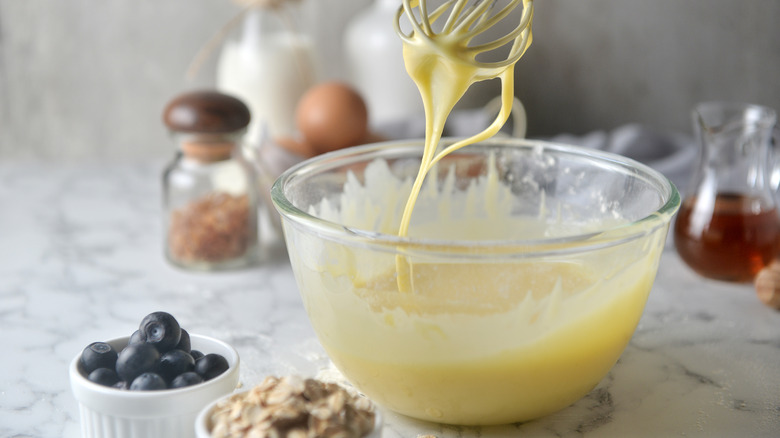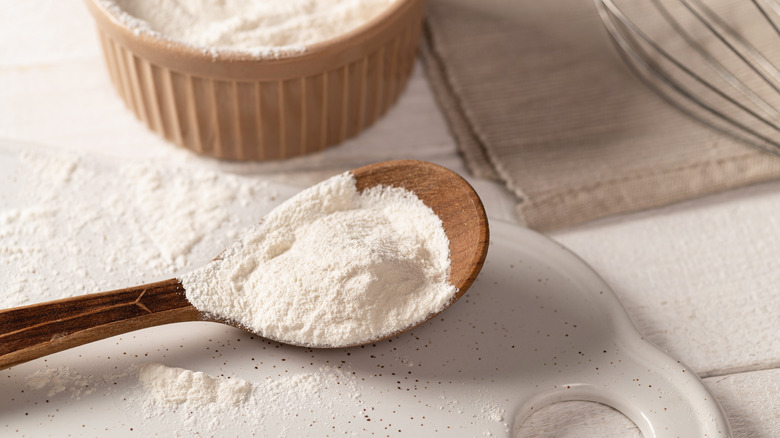It's Actually Beneficial To Overmix Gluten-Free Batters
When it comes to baking, the general rule of thumb is to never overmix. The more you mix the batter, the chewier and tougher your muffins will be. When fluffy is the end goal, handling the dough as little as possible is crucial. But with the rise in popularity of gluten-free baking and flours, the rules are no longer so black and white. When it comes to a gluten-free batter, the more you mix it the better.
Gluten is a protein found in wheat, barley, and rye. It acts like a glue that holds the ingredients together. It provides structure and texture to baked goods. When activated with liquid and mixing, the proteins bond and stretch, adding elasticity and aiding in the dough rising. There is a fine line, however, between a fluffy, doughy muffin and a gummy and chewy one.
Gluten-free flours do not contain this protein, so there is no risk of toughening the dough with overmixing. However, they also lack a component that provides that essential structure, binding, and rise. This is where overmixing comes in — the more you mix a gluten-free batter, the more you will incorporate the ingredients. This will help with structure and chew as well as offer a better rise. It will also strengthen the batter so it can handle heavy add-ins such as chocolate chips or nuts.
How to provide structure to gluten-free batters
In addition to overmixing, there are some other measures you can take to ensure a gluten-free bread with body. When making a gluten-free baked good, you must find a way to replace the gluten. Most gluten-free flour mixes already have one incorporated and most recipes call for an ingredient that acts as a substitute. Xantham gum and guar gum are common ingredients you will see in gluten-free flour mixes. Recipes may call for psyllium, ground flaxseed, tapioca starch, or chia seeds. Some recipes may call for gelatin or extra eggs. All will help the dough stick together and emulate the chew of a conventional baked good.
Another step to add that differs from gluten baking is to let the batter rest after mixing it. Gluten-free flours are notoriously drier, as gluten also helps trap moisture in baked goods. Letting it sit before popping it in the oven will allow the gluten-free flour to absorb the liquids and build structure.

